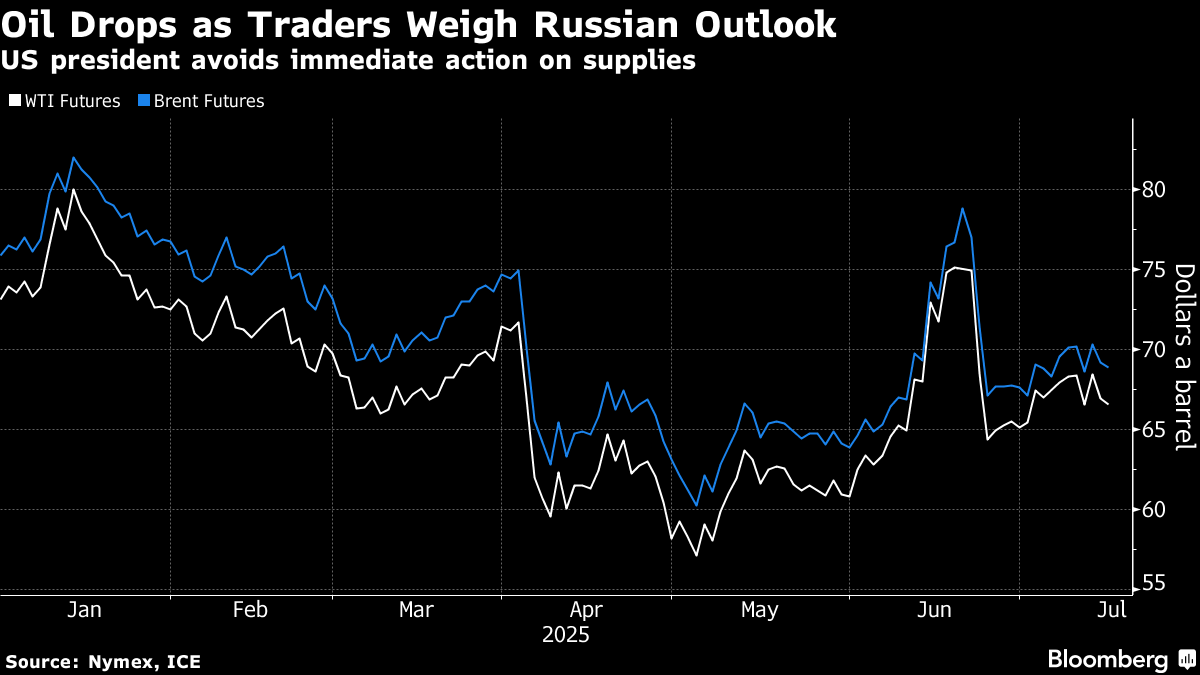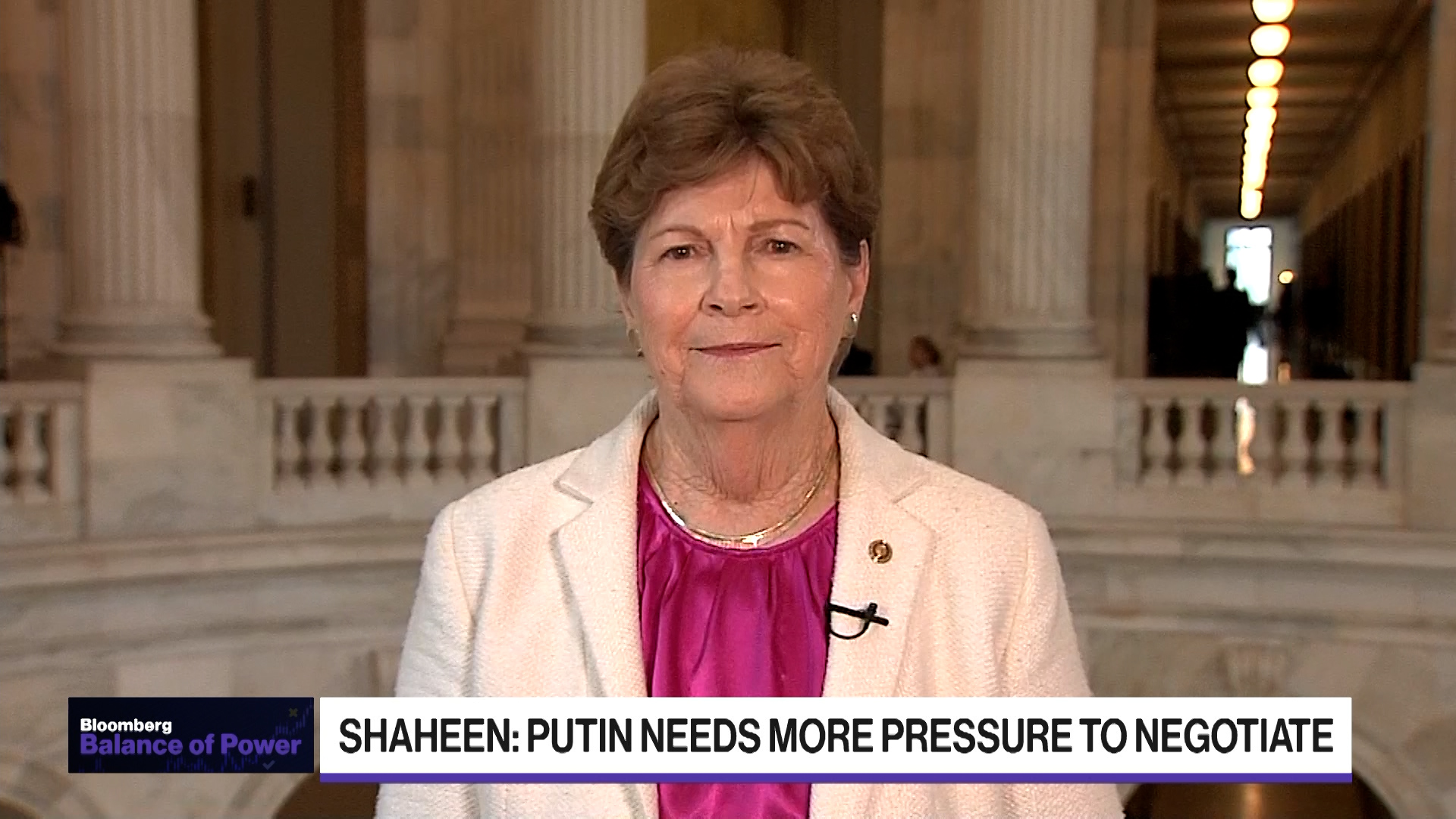Oil Extends Decline as Traders Assess Outlook for Russian Supply
(Bloomberg) -- Oil declined for a second session as US President Donald Trump’s latest plan to pressure Russia refrained from immediate new measures aimed at hindering Moscow’s energy exports.
Global benchmark Brent fell below $69 a barrel after losing 1.6% on Monday, while West Texas Intermediate was near $67. Trump boosted military support for Ukraine to resist Moscow’s assault, and threatened to impose 100% tariffs if the hostilities do not end with a deal in 50 days. The planned action effectively represents secondary sanctions on countries buying oil from Russia, according to Matt Whitaker, US ambassador to NATO, citing India and China.
India emerged as a leading taker of Russian crude as flows were reshaped following Moscow’s 2022 invasion. China, meanwhile, has been a diplomatic and economic lifeline for Russia, and its refiners also import the nation’s oil.

Brent oil has lost about 8% this year, hurt by the fallout from Trump’s trade war, as well as a drive by OPEC+ to relax supply curbs. Taken together, the headwinds have fanned concern output may run ahead of consumption this half, creating a glut, although current market metrics, including Brent’s prompt spread, point to underlying near-term support.
“The lack of any immediate action in relation to Russia, and the belief that secondary tariff threats will not be carried out, help to explain the market reaction,” said Warren Patterson, head of commodities strategy at ING Groep NV. “However, for now fundamentals remain supportive in the near term. It is only from the fourth quarter that we see significant loosening in the market, which is when we expect further downward pressure on prices.”
Goldman Sachs Group Inc. raised its forecast for Brent this half by $5 to $66 a barrel, citing lower-than-expected OECD stockpiles, especially in the US and for diesel. The outlook for next year, however, was kept at $56. “We continue to think that oil prices are likely to decline substantially by 2026,” analysts including Daan Struyven said in a note.

In Asia, meanwhile, traders assessed a relatively strong showing from crude processors in China, the world’s largest oil importer. Refining throughput rose to more than 15.2 million barrels a day in June, the strongest pace since September 2023, according to Bloomberg calculations based on government figures. A gauge of apparent demand also improved.
©2025 Bloomberg L.P.





